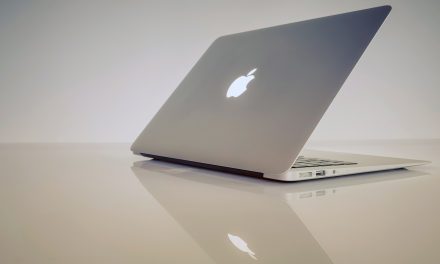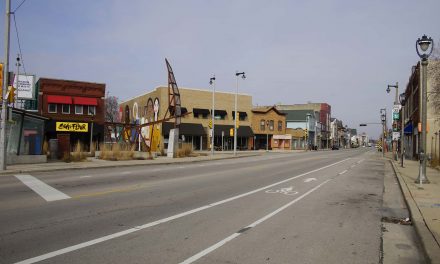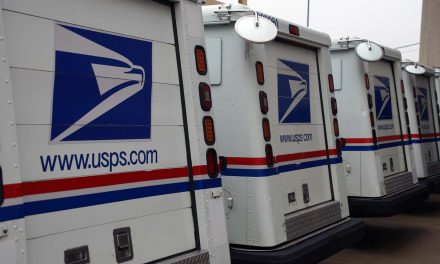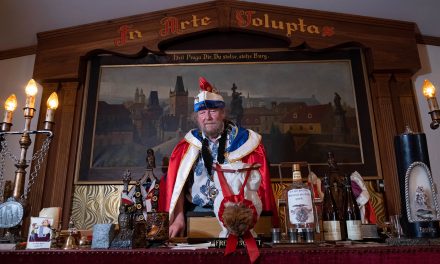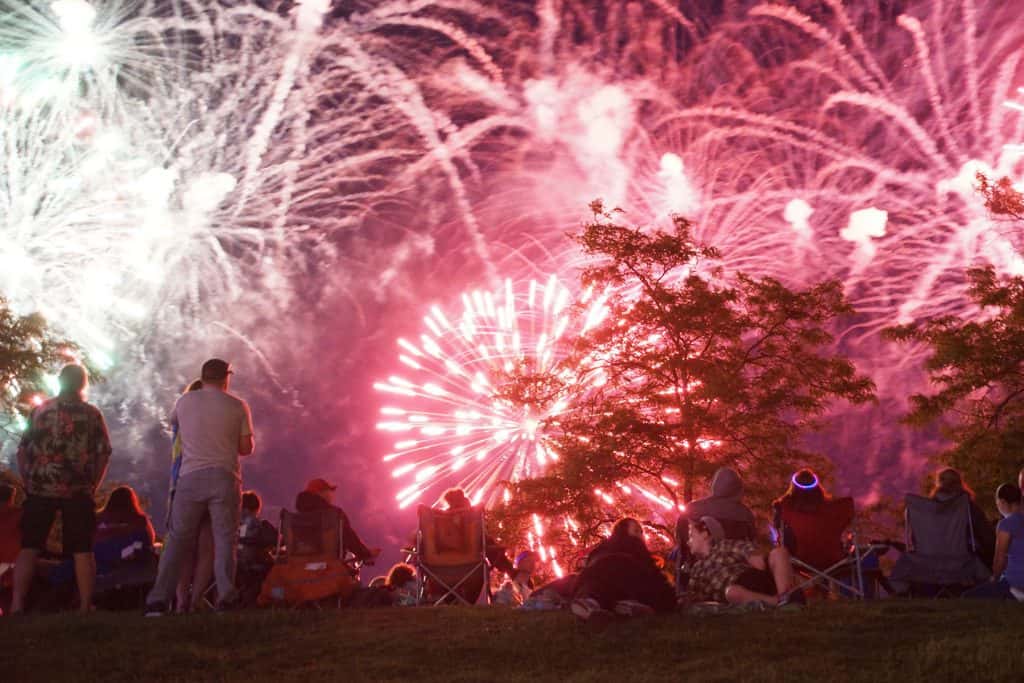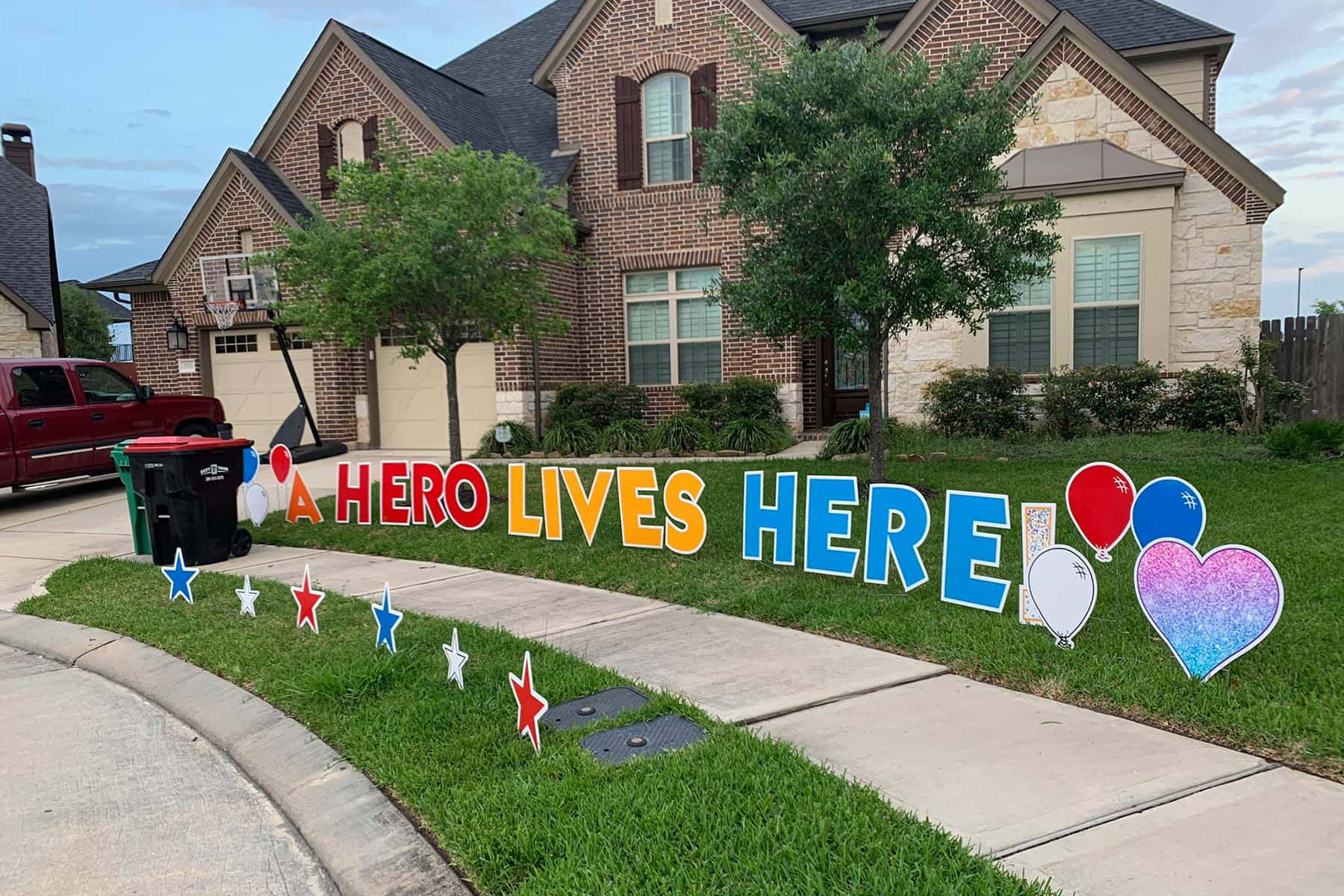
I can draw and label the diagram in my sleep. A circle, an arrow, a horizontal line bisecting the circle. A starting point, an ending point. A high point, a low point. Hundreds of my high school freshmen memorized Joseph Campbell’s “hero journey,” the result of his comparative study of myths and religions from around the world. The journey is a common narrative about heroes that begins with the hero leaving home on a mission and ends with the hero returning transformed and victorious. Since one can’t turn on any kind of media right now – or even walk past people’s homes – without seeing or hearing the word “hero,” I’ve sketched out the circle and the line once again, wondering what it might reveal about heroism during the pandemic.
The first written version of this universal hero journey was published almost 4,000 years ago. The Epic of Gilgamesh, chiseled into stone tablets, tells the story of an oppressive king who loses his best friend and travels to the end of the world to discover how to avoid pain, suffering and death itself. He returns to his kingdom humbled and wiser. Since then, every grand story of death and resurrection, Death Stars and Resistances, loss and redemption – you name it, it fits, whether it’s religious, literary or Hollywood. Countless religions, cultures and civilizations have sought to understand and glorify themselves by imagining heroes who rise up out of adversity or fight some kind of darkness.
In 2020 America, the pandemic has compelled many to look beyond its Marvel/DC Comics superhero obsession to the people in their midst, the heroes that live among us, as many “A Hero Lives Here” yard signs announce.
Within days of the governor’s safer-at-home order, a bandwagon of organizations, companies and media started declaring new heroes, assisted by inspiring soundtracks. People collecting food and money for their neighbors, sewing face masks for strangers, leaving inspirational messages on the sidewalks – all of a sudden, these were our new national heroes. The children cutting out hearts to post in their living room windows became heroes. So did the supermarket cashiers working for minimum wages, serving hundreds of food and toilet paper-toting customers each day; the mail carriers and meat packers, teachers and social workers; and, of course, everyone in the healthcare profession. Children, service industry workers, teachers and others too-often overlooked or underappreciated quickly joined the ranks of doctors and nurses, firefighters and police officers as national treasures. But for doing what?
A child writes a nice note. A Meijer employee clocks in. The mail gets delivered and the meat gets processed. A teacher does what he does every day: adjust and keep teaching. Social workers do what they do best in serving their clients and nurses attend to their patients. That’s their job, right? Be a kid, check out groceries, heal the sick.
Does making everyone who does their job – albeit ones of service – a “hero” dilute the great cultural phenomena that Campbell illuminated? It seems almost heretical or unpatriotic to suggest it, though I’ve heard people asking this question ever since 9/11, when firefighters and police officers quickly rose to hero status. Even before that, I’ve heard others suggest that just because someone has fought in battle, that doesn’t make them a “hero.”
Or is it inevitable that each generation constructs its own notion of heroism? Is it inevitable that during and after every event that puts society in peril, new heroes will arise? And is it a good thing that doctors and nurses, teachers and cashiers are included?
The Hero Journey
For those of you who have never heard of the hero journey, a simple Google search will yield a multitude of descriptions and depictions. Here’s how I’ve always described it: imagine, first, the circle I described with the horizontal line bisecting it. Noon represents home, where the would-be hero lives. This point also represents normality, ordinariness, the status quo. 1:00 is the Calling, when the would-be hero is called to perform some task out of their comfort zone, called by a god, another person or even by something inside themselves. The call might be to save an individual – or an entire civilization. It might be to spread a message or recruit for a war. It might be to fall in love or slay a dragon. Not surprisingly, the would-be hero refuses this call at first: it’s too scary, too risky, too different, too time-consuming. 1:30.
Sound familiar yet? Think about Lukе Skywаlkеr.
But if they don’t accept the call, then there’s no story, of course, so the would-be hero accepts the call. 2:00. Luckily, a Mentor offers guidance and reassurance, as well as natural or supernatural things to aid the would-be hero. More confident but still vulnerable, the hero begins their journey by crossing a threshold into the unknown. We’ve now reached the horizontal line and moved across it. 3:00.
Not yet? Think of Bilbo Baggins and Gandalf.
Between 3:00 and 6:00, the hero will endure many trials and tribulations and be tempted to give up and return home safely. If they stick with it (which they have to, of course – no pain, no gain), then the narrative throws them into what Campbell called the “belly of the whale,” after the Hebrew story of Jonah, whom God had swallowed up by a whale after he refused his calling (kind of a “time out”). This low point is at 6:00, the farthest away from home the hero could possibly be. Because myths are stories, the belly could even be physical death. It’s a lonely and difficult place to be. But like Jonah was, the narrative vomits the hero out of whatever scary situation they were in and often sends reinforcement to help the hero recover.
Another hint: the death and resurrection of Jesus.
At 7:00, the hardest thing the hero has to do to get to his goal. I call this “the Big Battle.” You can imagine who wins this big battle each time, right? Not only does the hero win, but they are transformed into something more, oftentimes, superhuman or godly: more confidence, more muscle, more skill. That 7:00 step is called “apotheosis” (notice the “theo-”, meaning “god,” in there). With this new-found strength, the hero can complete their journey, do what they need to do. They must recross back to the “normal” world (9:00) and make an important decision (10:00) between sharing the new strength or skill – or oftentimes a physical thing like a treasure or a special technology – with the hero’s community or, instead, keeping it for themselves. No matter what the decision, 11:00 is the hero’s reintegration into society and the creation of a “new normal.” That’s another phrase we’ve heard so much, maybe as ubiquitous as “hero.”
One thing I always asserted to my freshmen was that while Luke, Bilbo, and Jesus are seared into our collective imaginations as literary and religious heroes, the elitism of these narratives – the story of “chosen ones” or “the select few” – could be dismantled if we see how our daily lives also follow a kind of hero journey, especially during times of adversity. These are those kinds of times.
Pre-coronavirus hero journeys
You remember normal, right? For us in Wisconsin, it was March 11. On March 12, our normal routines at home and work, shopping and entertainment, worship and voting – even the way we think, as my last column explored – was put on pause. It’s only been a couple of months, but I’ve already begun to describe them as “the olden days.”
Let’s consider a hypothetical March 11 example: a teenager called to attend school that Wednesday. The calling would come from the government, who expected his presence, as well as from, perhaps, an alarm clock and a parent who needed to leave for work. The teenager might pull the covers over his head and punch the snooze button, but a call from a friend saying he was on the way to pick him up would motivate her to get out of bed. Armed with a toothbrush and a quick slice of toast, the teenager might remember another calling: an important algebra test waiting to be passed in 6th hour. Crap. He hadn’t studied as hard as he might have. His ride honks him out of this worry and he crosses the literal threshold out his door and toward the street. He and his friend cross another literal threshold into the school, the big test still looming over him.
Our teenager struggles through the first five periods before lunch: he forgot to do his homework for history, he has an argument with his boyfriend in the courtyard, spends study hall texting a friend for support, sings decently in choir, performs a strong dialogue in French but feels like he bombs the impromptu essay in English. Some hits, some misses. Finally, lunch – a temporary balm. Time, he determines, to do some last-minute studying with some buddies for the algebra test. Last period, unfortunately, his boyfriend breaks up with him in a text.
He’ll find out in a few days that his studying paid off, but he’s devastated. He sobs himself to sleep but is thankfully awakened by a call from the same study hall friend, who’s heard about the break-up. He and his friend talk for several hours, go grab a bite to eat and our teenager starts to feel better. And better off without his ex. By the evening, he’s ready to start the journey again at school the next day.
Obviously this teenaged adventure isn’t the same as stealing fire from the gods and being chained to a mountain where an eagle rips out your liver each day (Prometheus) or enduring a ten-year Odyssey trying to return to Ithaca after the battle of Troy (Odysseus) or battling dragons or maniacal villains. But it’s all most of us have. And life can be tough.
Just because the hypothetical teenager’s daily life resembles the hero journey, does that mean he’s a “hero,” though? If so, then we’re all heroes, or at least on our worst days. Maybe that’s what it means to be a hero – struggling through our worst days. Or is that just life?
If that doesn’t make him a hero, then what other ingredients would qualify an ordinary person like this teenager – or you or me – as heroic? Would I have to imagine greater struggles than schoolwork and break-ups, bigger obstacles and dragons at school and at home, inner demons, historic monsters?
Even though the people we’re calling heroes nowadays aren’t much different than this teenager – they go to work, face obstacles, overcome them, return home – perhaps they possess something more deserving of the title “hero.”
“New normal” hero journeys
Neither the teenager and the essential workers we’re calling heroes today are mythical, idealized, superhuman. Neither are particularly extraordinary. Though their lives, as I’ve suggested, fit a pattern of triumph and struggle, our country’s nurses and teachers and bus drivers and cashiers are still doing their jobs, just as the firefighters and police officers on 9/11 were doing their jobs. Just as the teenager was doing his job, which was going to school.
Perhaps our essential, frontline workers are heroic, then, because they’re doing their jobs in the middle of a pandemic. Their jobs are far from routine: they’re masked and gloved, protected by face shields and plexiglass, armed with disinfectant and paper towels. They’re managing overcrowded hospitals and making difficult calls home. They’re in enclosed spaces like buses and factories or stuck behind registers as hundreds of people each day pass through. They’re keeping their kitchens open to provide meals for not only curbside pick up but, as many places have done, for free donations to the community. They’re teaching classes online for the first time, isolated from their students, and they’re working in the nursing homes trying to protect the most vulnerable.
Everyday, many of these people are called to serve strangers even at the risk to their own health. Too often, they work without the swords and shields they need, whether personal protective equipment or financial support from the federal government. Others work without the expertise let alone experience of working virtually with vulnerable young learners; they’ve been forced to conjure up new and creative ways of instructing. And too many are enduring extraordinary blows to their physical and psychological well-being. Those out on the frontlines return home, fall asleep, then get up for another non-routine day of inordinate risk of becoming infected by the virus.
And the virus isn’t even the biggest villain in all of this. COVID-19 is a naturally occurring organism, one we want to vaccinate ourselves against, of course, but it’s most likely not going anywhere. So with the likelihood of an endemic virus that we’re going to have to deal with, who are the villains?
Trump’s poor response to the pandemic, for one: downplaying the crisis, failing to have an effective preparedness plan, rushing to lift the bans. Other villains are more collective: Republicans who struck down Governor Evers’ stay-at-home extension; those who believe that the virus is a hoax; those who willingly flaunt CDC recommendations. It’s the crowds of unmasked sunbathers or patrons flocking to beaches and bars. Perhaps the latter aren’t really “villains” but rather reckless compatriots in this hero journey thinking only of themselves and not others.
To be working on the frontlines and know that some people want so badly to return to the “old normal” that they’d put others’ lives in jeopardy must be harrowing indeed.
Different Kinds of Heroes
If the definition of “hero,” then, is someone who steps up to the plate in extraordinary, non-routine circumstances to serve others even at the risk of something very personal, like family, career, social status, or, in this case, health, then these essential, frontline workers are indeed heroes. And the rest of us are just, well, humans.
Or maybe there are just different kinds of heroes: gods and superheroes, historical figures and current celebrities, those who fight in wars or who work in dangerous jobs, those who work on the frontlines during a pandemic, those who do good, decent, altruistic things for others, and those of us (all of us) who get up and face each day.
No one knows the outcome of this hero journey yet. We have no vaccine, we’re still in various stages of “bouncing back,” as Governor Evers’ administration is calling it, the virus is still spreading and people are still dying. Through it all, however, those on the frontlines are demonstrating what it means to accept a call and see it through. We have a “new normal.” It’s just a matter, now, of seeing how much of it we accept and how much we change when we all cross over the threshold into a more permanent new normal. What new powers, what new mindsets, what new behaviors, will we share with our communities?
After examining the hero journey again, I think my hope is that we will continue to embrace a more inclusive concept of heroism that doesn’t exclude anyone – gods and humans – and that will recognize the unsung heroes that have always been among us but have often been taken for granted: the healthcare workers, the cashiers, the social workers, the teachers, the people out there making sure we have what we need, whether that’s food, toilet paper, education or healing.
I’m sure there’s some ingrained cultural need to look up to, idealize, idolize, and deify, so that’s not going away anytime soon. But how much easier it is to just look up to our neighbors for accepting the call to serve, crossing the threshold into a scary present and an uncertain future, and struggling right alongside everyone else – then announce to the world, “A Hero Lives Here.”
© Photo
Memorial Yard Signs Facebook Page

